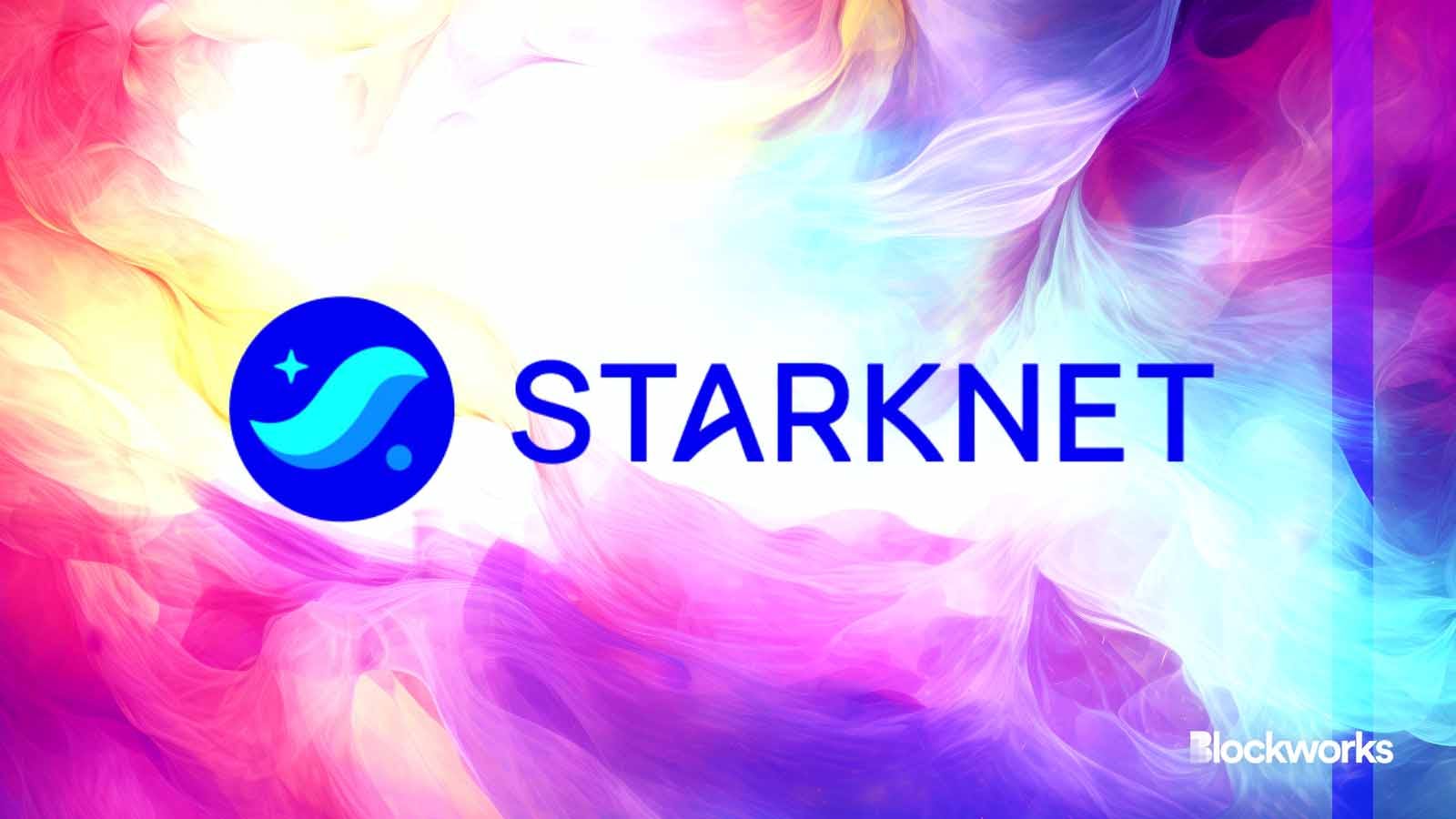Starknet Foundation teases STRK token airdrop
Details on the 2024 airdrop are coming into focus

Starknet and Adobe modified by Blockworks
Starknet, a zk-proof-based Ethereum layer-2, is taking a significant step towards decentralizing its network and fostering community engagement.
The Starknet Foundation outlined its plan to distribute over 1.8 billion STRK tokens through various initiatives aimed at driving adoption and growth on its blockchain platform.
The token, which is not currently transferable or tradable, was first deployed on Ethereum in November 2022, and ever since speculation has been rife that the network would eventually conduct an aggressive program of community incentives and a retroactive airdrop targeting active Starknet users.
An X thread on Friday from the Starknet Foundation brought the contours of this eventual distribution into clearer relief.
At the heart of the initiative is a “provisions committee,” entrusted with the responsibility of allocating 900 million STRK tokens. This committee’s goal is to ensure a “fair, decentralized and transparent distribution of STRK over multiple programs and phases,” according to the Foundation.
Its objective is to distribute ownership of the network’s native token and to reward past and future contributions.
How exactly this will be done remains to be seen, and a Starkware spokesperson declined to comment further.
The Starknet Foundation, incorporated in the Cayman Islands, is independent of Starkware Industries, which is headquartered in Netanya, Israel, but its seven person board includes both Starkware co-founders Eli Ben-Sasson and Uri Kolodny.
The company was valued at $8 billion following its 2022 Series D fundraise.
In addition to rewarding contributions, the Starknet Foundation aims to reward users for their transactions on the Starknet network, such as offering rebates for transaction fees.
Starknet fees are denominated in ether, and the network posts zero-knowledge proofs of execution of transaction batches to Ethereum mainnet — a security and scaling mechanism.
Read more: So your layer-2 is ‘secured by Ethereum’ — what does that mean?
The Starknet Foundation is also exploring ways to incentivize activity in the decentralized finance (DeFi) sector, working with an initial allocation of 50 million STRK tokens. A six-member “DeFi Committee,” currently concluding its research phase, will soon start implementing strategies to enhance liquidity, trading volume and overall growth of DeFi protocols on Starknet.
Read more: Starkware’s new appchain attracts DeFi derivatives dex with CeFi liquidity
Starknet teased that further details on its incentive mechanism aimed at developers and decentralized applications (dapps) on the Starknet network would be forthcoming next week.
Since the token currently has no secondary market, it’s challenging to ascribe a value to the planned distribution, but layer-2 peers Polygon, Optimism and Arbitrum currently boast fully-diluted markets caps of between $8 billion and $11 billion.
The total supply of STRK tokens is 10 billion, of which 5 billion were allocated to the Starknet Foundation.
The airdrop is one of many anticipated in 2024 related to Ethereum layer-2 networks, such as LayerZero and zkSync.
Get the news in your inbox. Explore Blockworks newsletters:
- The Breakdown: Decoding crypto and the markets. Daily.
- 0xResearch: Alpha in your inbox. Think like an analyst.






